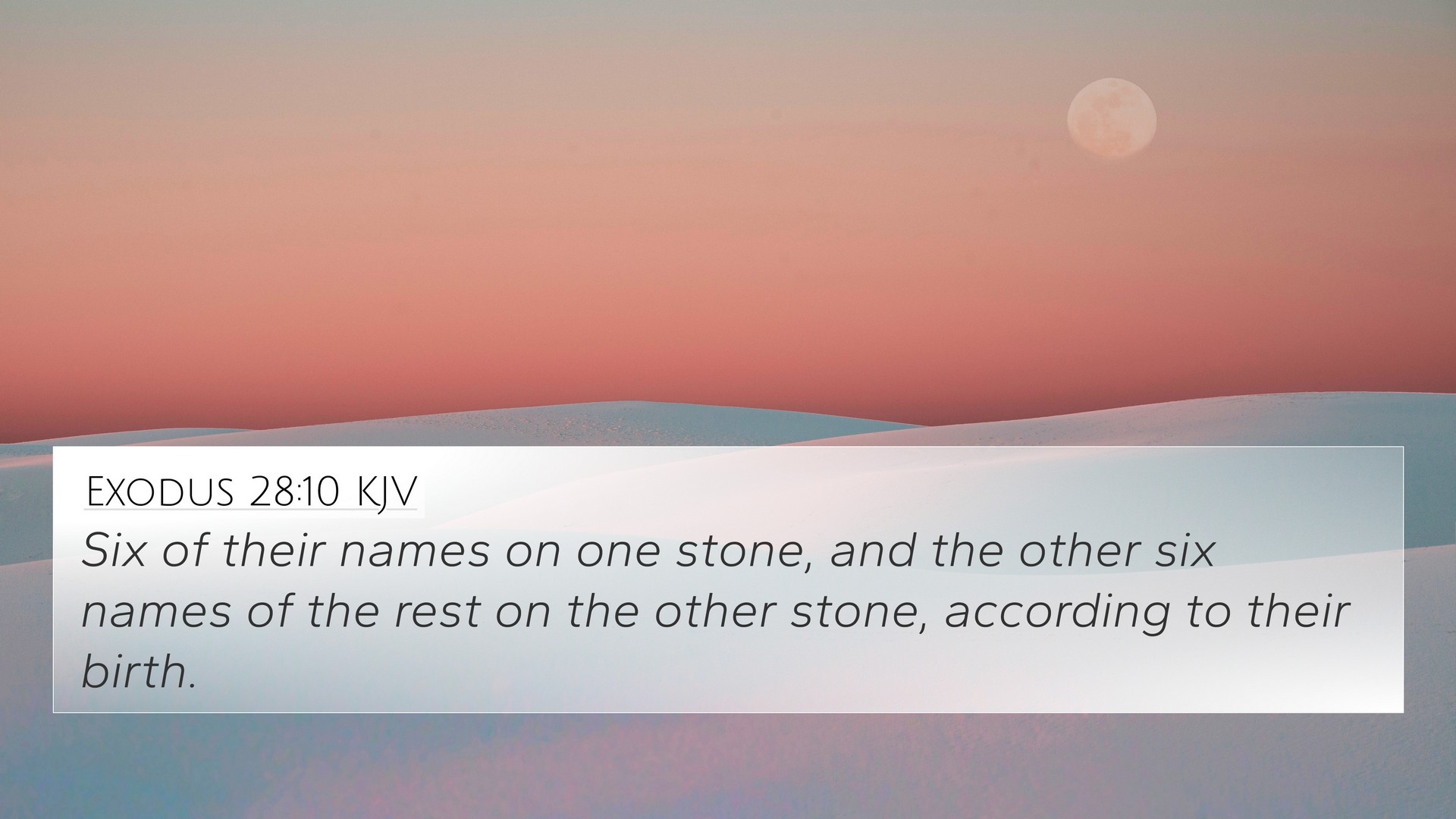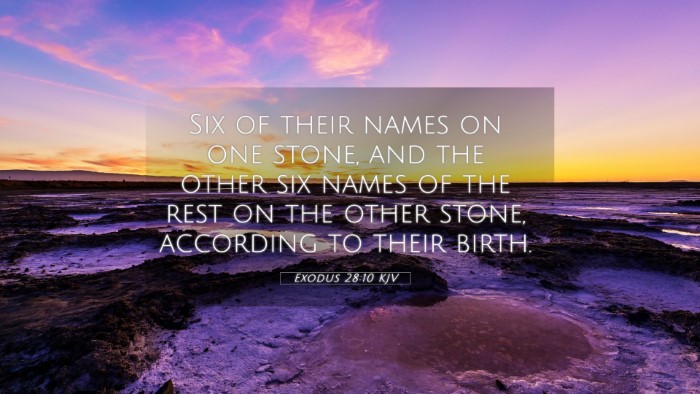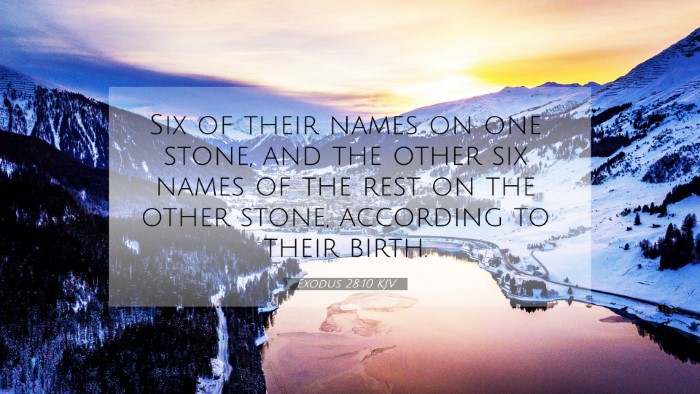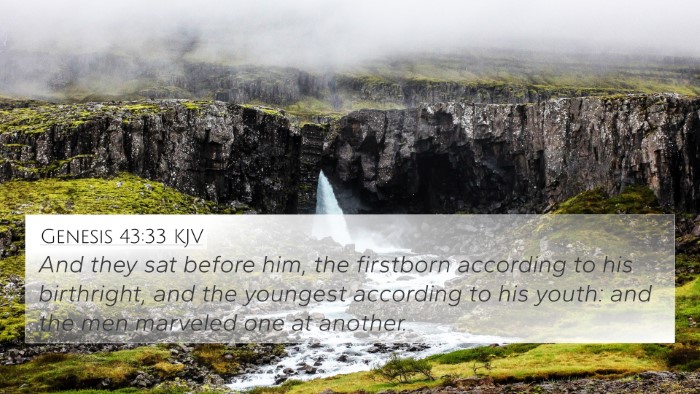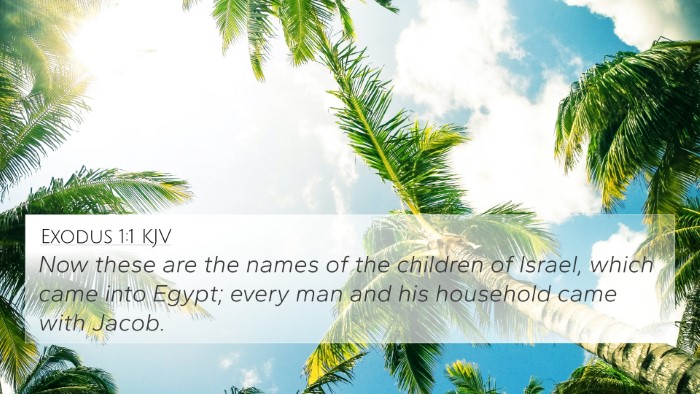Understanding Exodus 28:10
Exodus 28:10 reads: "Six of their names on one stone, and the other six names of the sons of Jacob on the other stone, according to their birth." This verse describes the stones of the high priest's breastplate, which bears the names of the tribes of Israel. It holds deep significance in representing the people before God and highlights themes of representation, priestly duties, and the covenantal relationship between God and His people.
Contextual Analysis
This verse is part of a larger passage (Exodus 28) that provides instructions on the garments of the high priest. It emphasizes the role of Aaron, the first high priest, and his responsibilities in mediating between God and the Israelites.
Thematic Significance
-
Representation of the People:
The breastplate with the names engraved symbolizes the unity and representation of the tribes of Israel before God. Each tribe is acknowledged and represented.
-
Covenant Reminder:
The stones serve as a reminder of God's covenant with the descendants of Jacob, reinforcing the historical connection and ongoing relationship between God and His people.
-
Priestly Mediation:
As the high priest, Aaron has the unique role of being a mediator. The names on the breastplate suggest that he carries the concerns and identities of the people to God.
Insights from Public Domain Commentaries
According to Matthew Henry, the significance of the stones is both practical and symbolic. Each name engraved indicates God’s personal care and concern for each tribe, emphasizing His intimate relationship with them.
Albert Barnes further elaborates that the high priest's attire, especially the breastplate, was a visual and physical representation of the tribes of Israel approaching God. This not only served a ceremonial function but also an instructive one—reminding Israel of their heritage and God’s promises.
Additionally, Adam Clarke points out the arrangement of names according to birth order signifies both the natural and spiritual order, underscoring that God values lineage and continuity in His plan for salvation.
Cross-References and Related Verses
Exodus 28:10 connects with numerous Bible verses that enhance understanding and provide deeper insights into its meaning. Below are some notable cross-references:
- Genesis 49:28 - Jacob blessing his sons, where the significance of their names and tribes first emerges.
- Exodus 28:12 - Further explanation of how the priest should bear the names of Israel upon his heart.
- Revelation 21:14 - The twelve foundations of the New Jerusalem with the names of the apostles, representing God’s ongoing covenant.
- 1 Peter 2:9 - The concept of believers as a chosen people, paralleling the priestly role in bearing witness.
- Hebrews 5:1 - Discussing the high priest’s role and its implications in mediating for the people.
- Romans 12:1 - Encouragement to be living sacrifices, reminiscent of the sacrificial system carried out by priests.
- Colossians 3:12 - Illustrating how God's chosen people are to conduct themselves, much like the priestly duties outlined in Exodus.
Comparative Bible Verse Analysis
Analyzing Exodus 28:10 in relation to these verses shows the continuity of God’s plan and the evolving understanding of priesthood. From the physical breastplate of the high priest in the Old Testament to the spiritual implications in the New Testament, the connections between Bible verses classically demonstrate the unfolding narrative of God's redemptive work.
Tools for Bible Cross-Referencing
Engaging with scripture through cross-referencing deepens comprehension. Here are some tools and methods to facilitate this:
- Bible Concordance: Useful for locating definitions and passages related to specific terms.
- Bible Cross-Reference Guide: A thorough compilation of related scriptures for comprehensive study.
- Cross-Referencing Bible Study Methods: Techniques to discern links and thematic relations across testaments.
Conclusion
Exodus 28:10 serves not only as an instruction for ancient Israel's high priesthood but also as a profound reminder of God's enduring relationship with His people. By engaging with related scriptures and utilizing cross-referencing methods, readers can uncover layered meanings and applications for faith today. Through this verse, believers are called to remember that they too are chosen and represented before God, carrying the weight of that identity into their lives.
